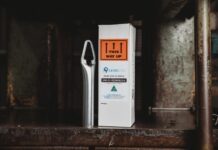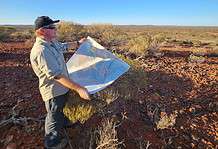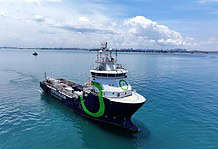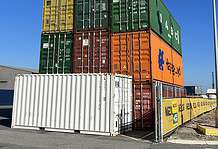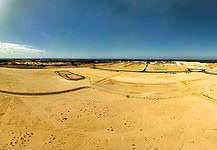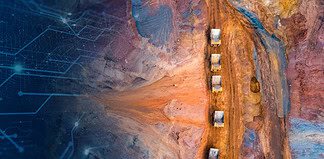All images: Iluka Resources.
MINERALS sands miner Iluka has been a bit of a sleeper in the resources rally. Minimal debt, great assets and excellent management – coupled with the best market conditions in five years – has Iluka well placed for a year of delivery at its Sierra Rutile, Jacinth-Ambrosia and Cataby projects. Reuben Adams spoke with Iluka Resources chief financial officer and head of Strategy and Planning Doug Warden.
Q. During Iluka’s 2017 full year results conference call chief executive Tom O’Leary said “we’re not looking to push prices so hard that we invoke substitution and a shrinking of the overall global demand profile, as happened earlier in the decade”. How will you ensure that price increases are sustainable, and how does this differ from Iluka’s approach during the mineral sands boom a few years back?
Iluka is focussed on delivering sustainable, long-term value from all of its products, including zircon.
In 2015, the company established a zircon reference price, which provides transparency and reduces speculation about what Iluka is doing in the marketplace.
We have also invested in gaining a better understanding of the trigger points for zircon substitution and thrifting.
Armed with this knowledge, the company is better able to make informed decisions on the consequences of its production and pricing actions.
Most recently, Iluka has adjusted its pricing period for zircon from quarterly to include periods of up to six months.
This ‘smoothing’ assists our customers in passing on changes to their customers and reduces volatility in pricing.
Q. The company noted that prior to the Sierra Rutile acquisition, Iluka’s reserve base had not been replenished despite consistent exploration effort. Do you believe there are still substantial high-grade low cost deposits to be found, or is the focus now on operational performance to make lower quality deposits economically feasible?
To sustain and grow Iluka’s business over the short to medium term, the company’s resource development activities are focussed on the delivery of expansion projects at both new and existing mines.
This includes the Cataby Project in WA; the expansion of the Jacinth Ambrosia operation in South Australia; and expansions and improvements at various sites in Sierra Leone.
Iluka is also progressing a portfolio of longer-term organic growth options, with a time horizon of approximately two to five years.
These include both conventional resource development initiatives, such as the Puttalam project in Sri Lanka; as well as those based on innovation and technical development, such as the Balranald Project in NSW and the Fine Minerals Project in Victoria.
The company maintains an active exploration programme, with activities currently taking place in Africa, Kazakhstan, Canada and Australia.
As in most commodities, the likelihood of discovering the ‘easy’ high-grade deposits at surface has reduced.
However, innovative generation and target testing in new terrains, especially under cover, means discovery of high-grade, low-cost heavy mineral deposits remains possible and will still deliver significant value.

Q. How is tendering and construction process tracking at Cataby?
All critical path activities for Cataby are tracking in line with Iluka’s schedule to see the project delivered in Q1 2019.
Q. What logistics are involved in relocating the 1100tpa Newman wet concentrator plant and other equipment to Cataby from Eneabba and Douglas? Is that process underway?
Separate work packages have been awarded to companies that successfully bid on the relocation of equipment from Eneabba (WA), Ouyen and Douglas (Victoria).
The use of this relocated equipment has had positive impacts on the capital cost for Cataby.
Relocation, refurbishment and installation works are on schedule, with subcontractors present on all sites.
Q. You mentioned that the positive market environment led to the restarting of Jacinth-Ambrosia in December. Was there a quicker than expected drawdown in HMC stockpiles last year?
Mining and concentrating activities at Jacinth-Ambrosia were suspended in April 2016 to accelerate HMC inventory draw-down during a period of subdued market demand.
In announcing the suspension, Iluka stated it would be for a period of 18 to 24 months.
In line with both the company’s expectations and improved market conditions, these activities recommenced in December 2017 – amounting to a suspension period of about 20 months.

Q. What mine optimisation initiatives are you looking at for Jacinth-Ambrosia?
To offset declining ore grades, Iluka is planning to expand the operation, increasing plant throughput by about 30 per cent.
The scope includes an upgrade of the wet concentrator plant; a second mining unit to handle additional ore; and a capacity increase at the site’s accommodation camp.
The expansion is expected to cost about $40 million, with completion scheduled for Q2 2019.
A definitive feasibility study is expected to be completed by mid-2018, with project execution expected to commence in H2 2018, subject to Board approval and market conditions.
Q. Where does Balranald fit into the company’s longer term plans after 2019?
Balranald is a large, deep, rutile-rich deposit in the northern Murray Basin, New South Wales.
Because of the deposit’s depth (approximately 60 metres underground), Iluka is pursuing an innovative, unconventional approach to this development, with a mining method based on directional drill technology.
Advantages of this approach encompass a minimal environmental footprint versus conventional mining; potentially lower capital intensity; scalable operations; and portfolio flexibility.
The company is taking a staged approach to potential production start-up in 2021.
This includes continued de-risking in 2018, with a third production trial scheduled at a cost of approximately $25 million.
Q. Why was the Metalysis investment impaired to nil in December? What other innovation opportunities is Iluka exploring?
Metalysis is an unlisted UK-based technology company focused on solid state manufacturing of metal powder.
Iluka’s investment in this early stage technology was intended to promote new markets for our products and provide an opportunity to generate new revenues through participation in metals manufacturing.
The write down occurred following Iluka’s decision not to participate in Metalysis’ most recent round of funding.
Metalysis’ focus has shifted away from titanium, which was the original basis of Iluka’s investment in the company.
Despite this disappointing development, innovation remains a key element of Iluka’s operating model and the company is committed to exploring opportunities to improve and grow its business.
Notable innovation opportunities include the Balranald and Fine Minerals projects respectively, among other initiatives.
PROJECT SNAPSHOT
JACINTH-AMBROSIA (Eucla Basin, South Australia)
- December 2017 restart following 20 month suspension
- Restart costs: ~$7 million
- 80 employees and 95 contractors on site
- Group zircon production of 300,000t expected in 2018
- $40m upgrade project subject to ongoing mine optimisation work
CATABY (Perth Basin, WA)
- Mine life: 8.5 years
- Capital cost: $250m-$275m
- Offtake agreements secured for 85% of synthetic rutile production for minimum 4 years
- Construction period: ~18 months
- First production: H1 2019
SIERRA RUTILE (Sierra Leone)
- Resource mine life: +50 years
- Iluka’s first full year of ownership
- Significant operational improvements in 2017, including increased heavy mineral recovery and concentrate grades
- Expansion projects progressed and on track
BALRANALD (Murray Basin, VIC)
- Potential production start-up: 2021
- Large, deep, high grade rutile-rich deposit
- Progressing detailed feasibility study using innovative, unconventional underground mining method
- Planning for final $25m field trial underway


